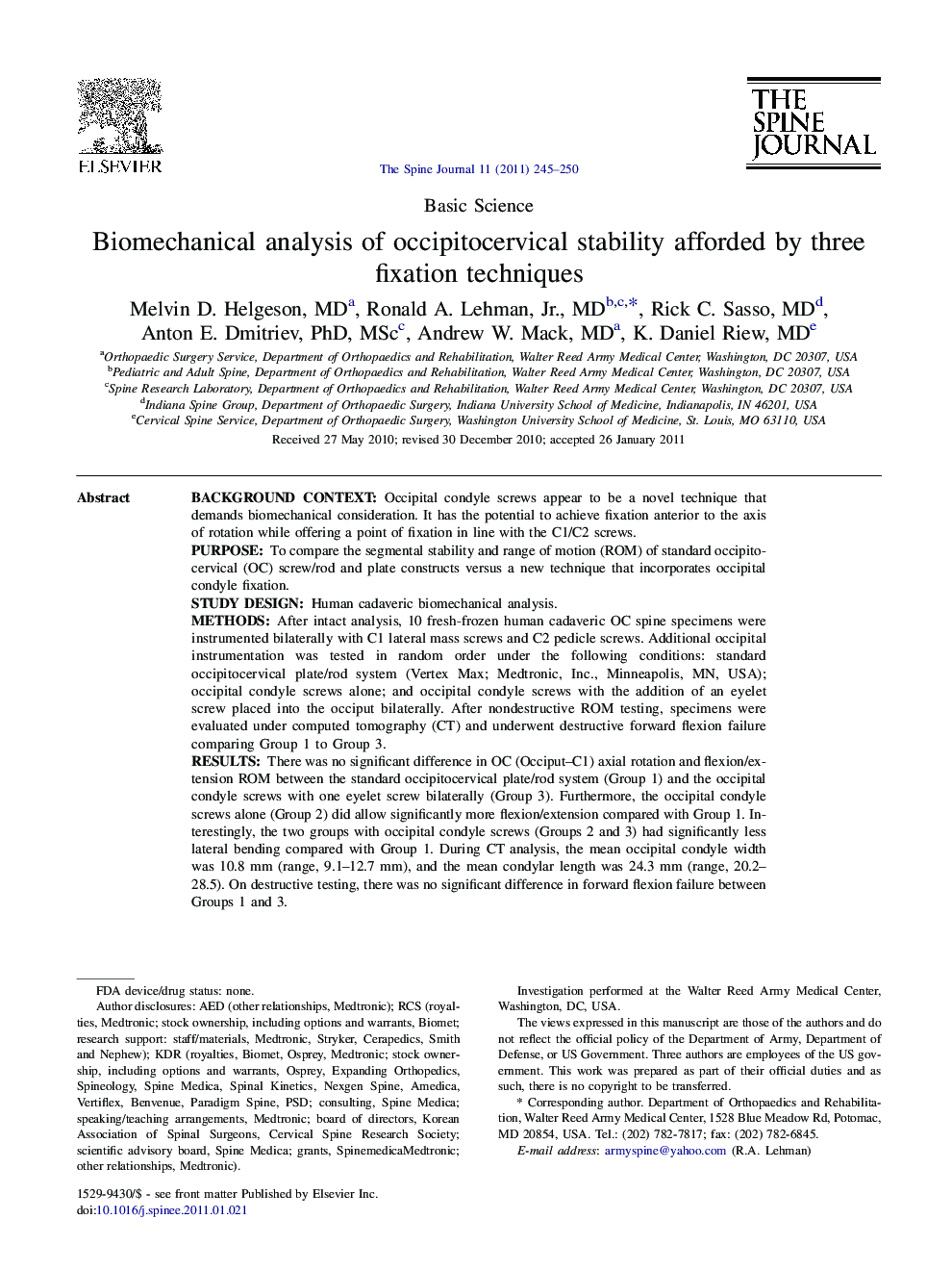| کد مقاله | کد نشریه | سال انتشار | مقاله انگلیسی | نسخه تمام متن |
|---|---|---|---|---|
| 4098092 | 1268607 | 2011 | 6 صفحه PDF | دانلود رایگان |

Background contextOccipital condyle screws appear to be a novel technique that demands biomechanical consideration. It has the potential to achieve fixation anterior to the axis of rotation while offering a point of fixation in line with the C1/C2 screws.PurposeTo compare the segmental stability and range of motion (ROM) of standard occipitocervical (OC) screw/rod and plate constructs versus a new technique that incorporates occipital condyle fixation.Study designHuman cadaveric biomechanical analysis.MethodsAfter intact analysis, 10 fresh-frozen human cadaveric OC spine specimens were instrumented bilaterally with C1 lateral mass screws and C2 pedicle screws. Additional occipital instrumentation was tested in random order under the following conditions: standard occipitocervical plate/rod system (Vertex Max; Medtronic, Inc., Minneapolis, MN, USA); occipital condyle screws alone; and occipital condyle screws with the addition of an eyelet screw placed into the occiput bilaterally. After nondestructive ROM testing, specimens were evaluated under computed tomography (CT) and underwent destructive forward flexion failure comparing Group 1 to Group 3.ResultsThere was no significant difference in OC (Occiput–C1) axial rotation and flexion/extension ROM between the standard occipitocervical plate/rod system (Group 1) and the occipital condyle screws with one eyelet screw bilaterally (Group 3). Furthermore, the occipital condyle screws alone (Group 2) did allow significantly more flexion/extension compared with Group 1. Interestingly, the two groups with occipital condyle screws (Groups 2 and 3) had significantly less lateral bending compared with Group 1. During CT analysis, the mean occipital condyle width was 10.8 mm (range, 9.1–12.7 mm), and the mean condylar length was 24.3 mm (range, 20.2–28.5). On destructive testing, there was no significant difference in forward flexion failure between Groups 1 and 3.ConclusionsWith instrumentation across the mobile OC junction, our results indicate that similar stability can be achieved with occipital condyle screws/eyelet screws compared with the standard occipitocervical plate/rod system.
Journal: The Spine Journal - Volume 11, Issue 3, March 2011, Pages 245–250